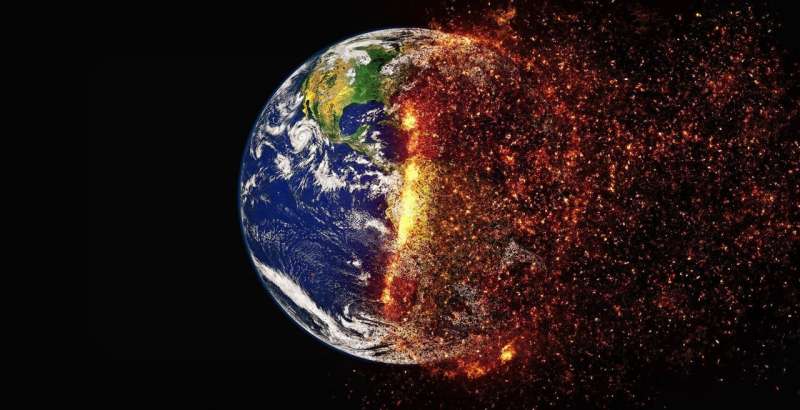Study: Unite solutions to climate and biodiversity crises to save life on earth

Leading experts on the ecological impacts of climate change are calling for urgent action to align the climate and biodiversity agendas to ensure that low cost, low risk, low maintenance opportunities to jointly and efficiently address these two environmental issues are prioritized and implemented.
A new, landmark study led by conservation and science charity ZSL (Zoological Society of London), and involving two Lancaster University Professors, has been published today (Wednesday 22 September 2021) in the Journal of Applied Ecology. The sobering study states that treating the global climate change and biodiversity crises separately is, in many situations, ineffectual, and at worst, could deepen the problem.
The study titled "Time to integrate global climate change and biodiversity science-policy agendas," identifies where research could be improved in five important areas of ecological work; including some of the most well-known nature-based solutions (nbs) such as protecting landscapes and seascapes and restoring ecosystems, to get the best out of these.
While the overwhelming scientific consensus is that humanity is facing a climate crisis, biodiversity is also declining across the world at unprecedented rates. The 2020 ZSL Living Planet Index recorded a decline of 68% in average species abundance—overwhelmingly driven by human activity.
Published ahead of COP26, the team argue that to drastically improve humanity's chances of dealing with both global existential challenges, bolstering scientific research must be backed up by major systemic changes in the way climate change solutions are designed and implemented.
ZSL senior research fellow and expert on the impacts of global environmental change on biodiversity, Dr. Nathalie Pettorelli, led on the study.
Dr. Pettorelli said: "The level of interconnectedness between the climate change and biodiversity crises is high and should not be underestimated. This is not just about climate change impacting biodiversity; it is also about the loss of biodiversity deepening the climate crisis. Reduced species abundance, local extinctions, as well as the rapid degradation and/or loss of ecosystems such as mangroves, tropical forests, peatlands and seagrass are having a major impact on our planet's ability to store carbon, while reducing nature and people's ability to adapt to and/or cope with changing climatic conditions. One cannot continue to independently manage landscapes, freshwater wetlands and seascapes for biodiversity conservation or climate change mitigation/adaptation, hoping that one will automatically benefit the other. We urgently need to significantly improve the scientific and political integration of the biodiversity and climate change agendas so that win-win situations can be quickly and more easily identified."
The long-anticipated United Nations (U.N.) Convention on Climate Change (COP26) in October presents an ideal window of opportunity for Governments around the world to demonstrate leadership, transparency and accountability to help turn the tide on both climate and biodiversity.
Professor Nick Graham, chair in marine ecology at Lancaster University and co-author of the study, said: "Integrating science, policy and investments in understanding and tackling the biodiversity and climate change crises is increasingly important. Similarly, undoing some of the structures that currently cause both biodiversity loss and contribute to climate change should be a priority. This includes subsidies that support industries which both contribute to biodiversity declines and create large emissions."
As well as high-level policy change, the study identifies five priority areas of ecological research needed to improve currently employed tactics of addressing the biodiversity and climate emergencies.
These include developing a widely accepted approach to assess the benefits that projects aimed at mitigating climate change, bring to biodiversity; methods of tracking ecosystems that are changing their distribution or facing collapse due to the impacts of climate change; and developing ways to predict the impacts of climate change on the effectiveness of nature-based solutions. The authors say that all solutions must match the short and long-term scale of both global challenges and that evidence and knowledge must be developed to ensure this. Finally, nature-based solutions such as restoration projects and rewilding, must be regularly risk assessed to ensure that they are sustainable, and benefitting the wildlife and communities they intend to serve.
Professor Jos Barlow of the Lancaster Environment Centre at Lancaster University studies forests in the Amazon. He said: "There is growing interest in using forest restoration to mitigate climate change but employing an ad hoc approach risks missing many of the potential co-benefits that this could bring for biodiversity conservation. In many regions, there is already enough data and information to inform decisions and attain these co-benefits—the challenge now is to ensure the necessary dialog and flow of information between policy makers, practitioners and researchers."
More information: Nathalie Pettorelli et al, Time to integrate global climate change and biodiversity science‐policy agendas, Journal of Applied Ecology (2021). DOI: 10.1111/1365-2664.13985
Journal information: Journal of Applied Ecology
Provided by Lancaster University





















